Zeevang Pumping Station
In the open landscape, just north of Purmerend on the Zeevangsdijkje, lies provincial monument Gemaal Zeevang with the old machinist's house next to it. Both were built in the late 19th century by order of the Zeevang polder administration.
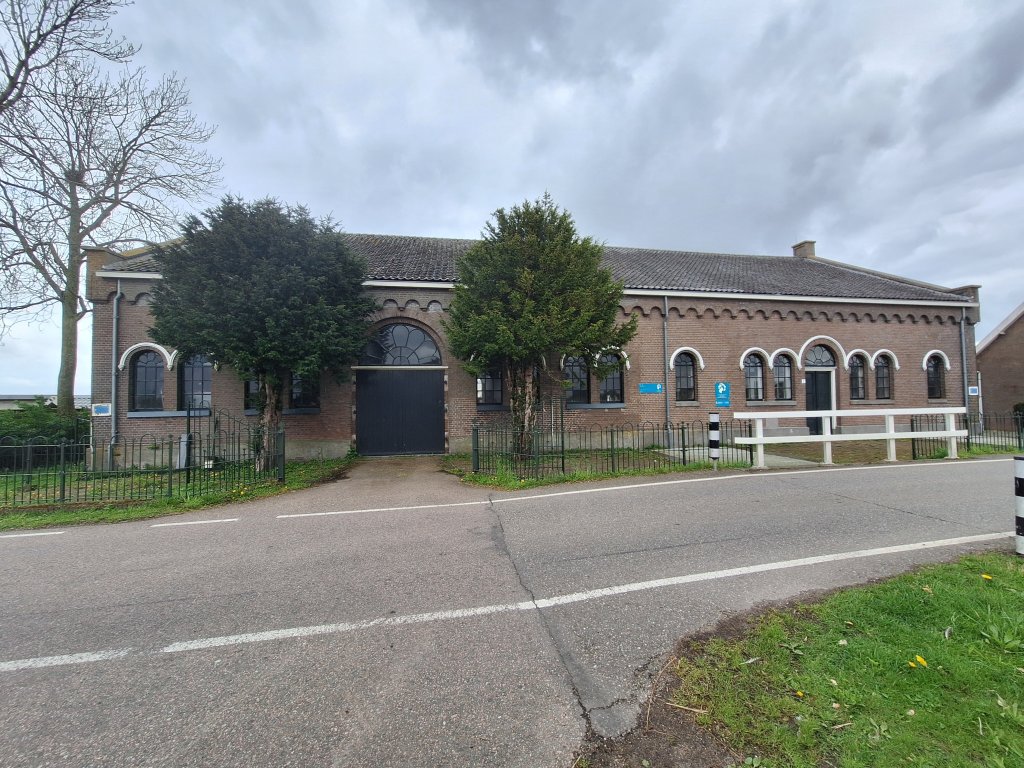
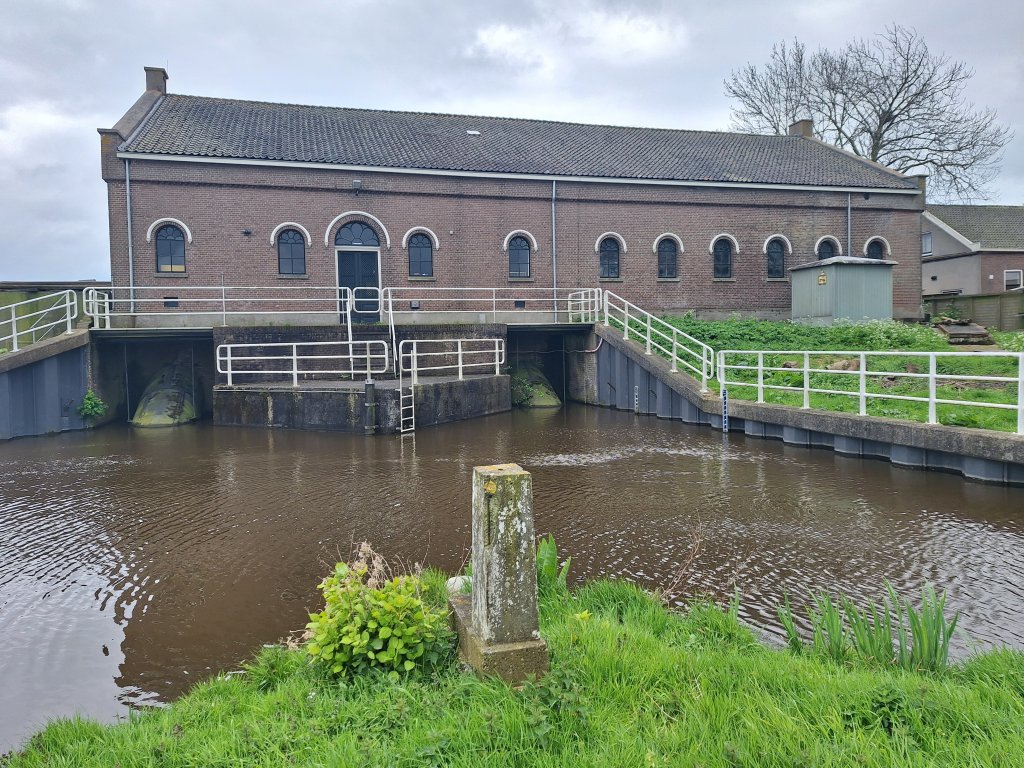
Drainage Zeevang polder
The pumping station is located on the south side of the Zeevang polder. In the polder, a large peat area of over 3,200 hectares, the old parcel structure has remained largely intact to this day. Due to the steady decline in the area's surface level, the pastures were increasingly flooded. At the end of the 15th century, the solution to this problem was the construction of polder mills. At the location of the pumping station there was a screw mill that drained into the Purmerringvaart via the mill ditch (still present today).
Steam pumping became available in the mid-19th century. In 1872 the steam pumping station De IJzeren Man was built on the north side of Edam. It was equipped with one screw and had a capacity of 75 cubic meters per minute. However, the drainage of the polder mills and this pumping station soon proved inadequate to meet the increasing demands of agriculture.
Zeevang Pumping Station
Engineer P. de Leeuw of the Hoogheemraadschap van de Uitwaterende Sluizen played an important role in the plans for a second pumping station, the Zeevang pumping station. It arose in 1879 along the Purmerringvaart between Kwadijk and Axwijk on the site of a mill and was equipped with two horizontal steam engines driving two wooden jacks with a diameter of 2 meters. The capacity of the pumping station was 150 cubic meters per minute. The machines were supplied by the Machinebau Actiën Gesellschaft in Hannover and the building contractor was C. Blankevoort of Monnickendam.
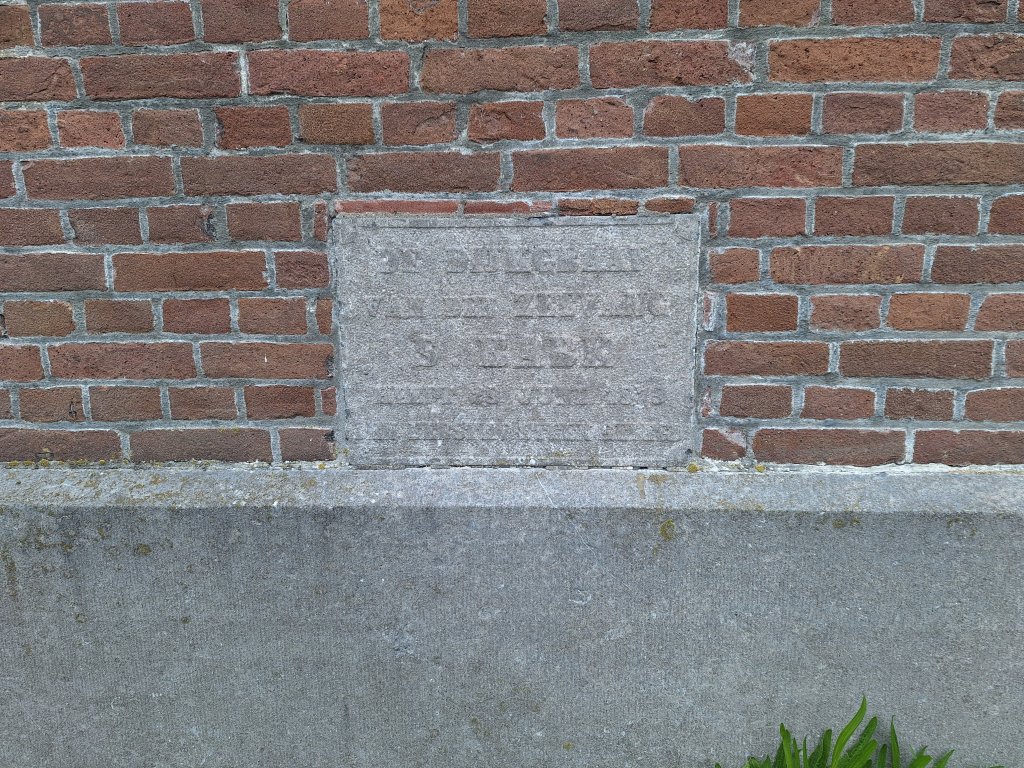
The entire complex consists of a machine building with front and rear watercourses. On the west side is the former machinist's house and on the east side a building where the Zeevang polder administration held offices. A chimney and coal shed were located on the northwest side. Near the waterfront stood an iron signal mast of the Schermerboezem drainage system. If the water in the storage basin threatened to rise too high, a blue flag on the mast would indicate a grinding stop. At night, a light was used. The signaling system was discontinued on January 1, 1981, and the mast was then removed.
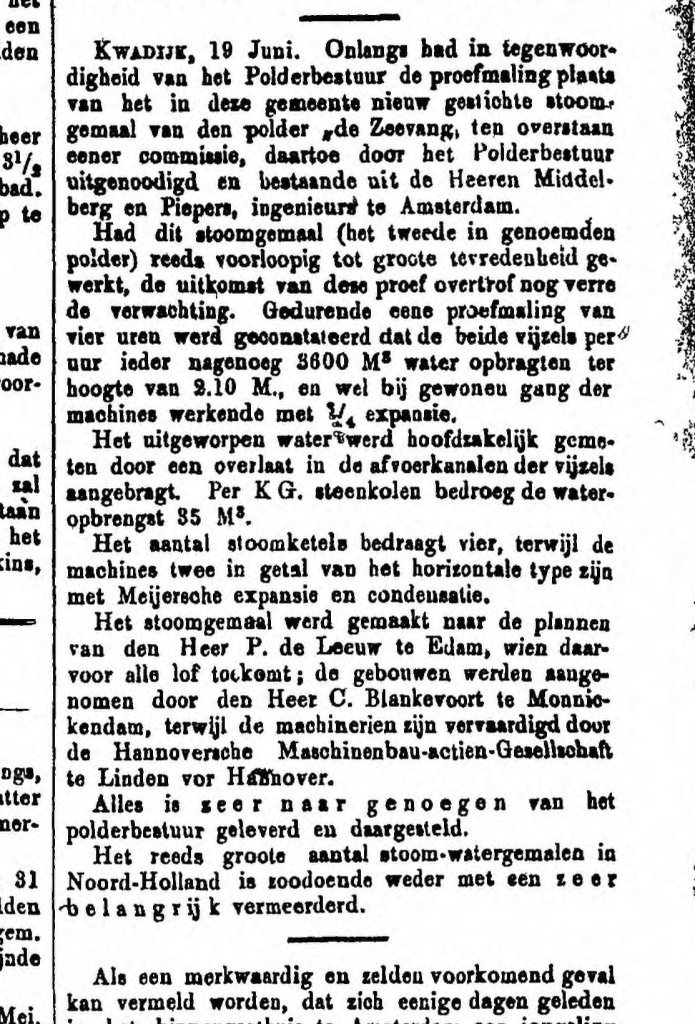
Modernization
The coal consumption of the pumping stations at Edam and at Kwadijk was very high. In 1916 a single electric pumping station with a capacity of 240 cubic meters per minute was proposed. A year later, the steam drive of Zeevang pumping station was thus replaced by N.V. Visser's Landbouwkantoor in Amsterdam. This company supplied two horizontal screw pumps, so-called Wood pumps, driven by electric motors of 150 and 120 hp respectively. Management of the entire project was placed in the hands of the Amsterdam engineering firm W.C. and K. de Wit. The IJzeren man pumping station was then redundant and was demolished in 1917.
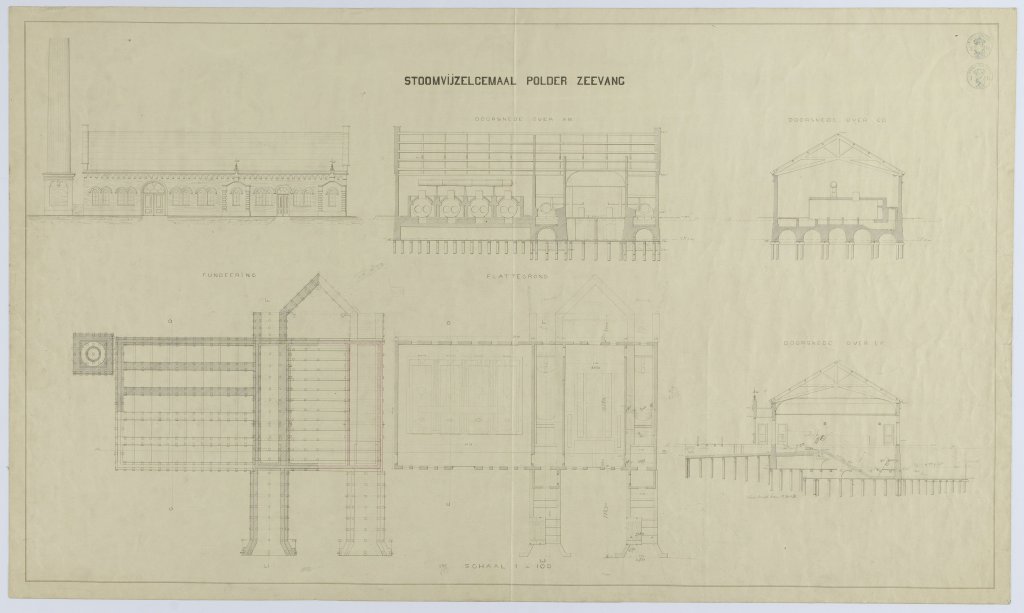
The aging electric motors gave way to new ones in 1956. In 2015, one of the pumps failed. The damage was extensive and this led to modernization of both pumps, which were immediately made fish-friendly. At the same time, the electric motors were replaced again.
The interior of the pumping station today contains two sections. On the left is the former boiler room, which is used as a storage room and workshop. The right half contains the machine room and entrance with the original workshop to its left and the transformer room to the right. The entrance and machine room have a wooden mirror ceiling.


Inundations Polder Zeevang
Polder Zeevang played a role within the water management system of the Stelling van Amsterdam. The Stelling is a circular military defense line with a radius of fifteen to twenty kilometers around Amsterdam, consisting of forts, batteries, ammunition magazines and inundation sluices.
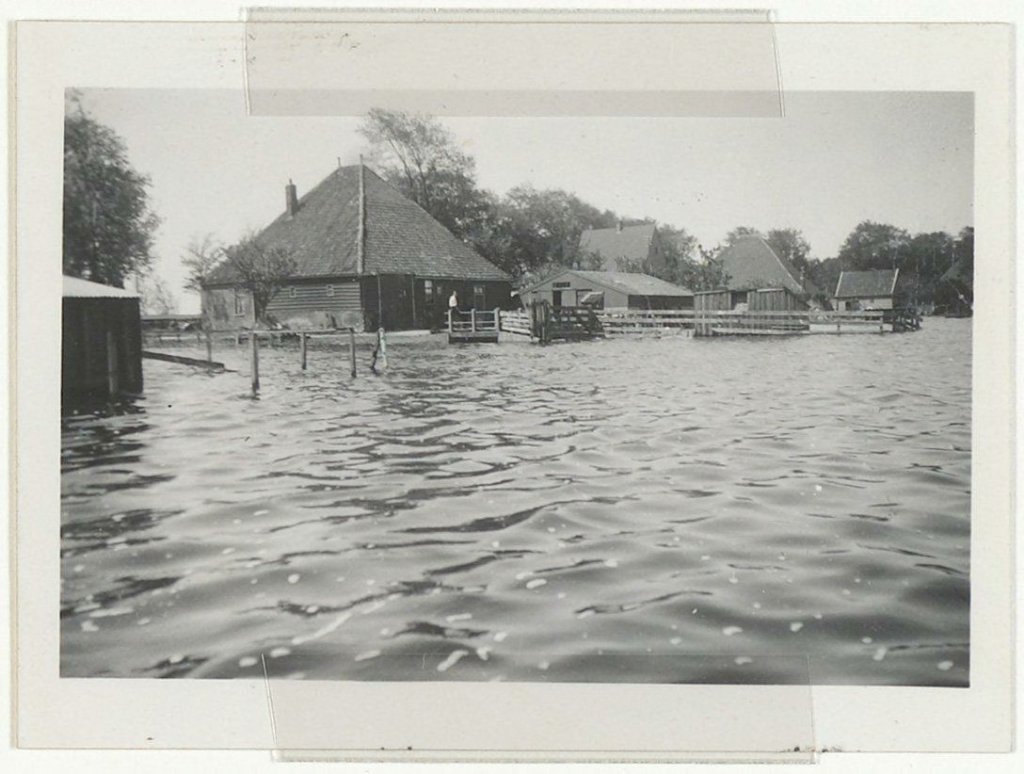
Through the Zeesluis in Edam, water from the Zuiderzee could be let (inundated) into the De Zeevang polder through the Pompsluis in Edam and the Purmerringvaart. The water level was adjusted so that it was too shallow for safe navigation, but just too deep for walking and driving. Inundation took place twice. The first time, in May 1940, it was done by the Dutch army. The pumping station was shut down and the Pompsluis opened. Within days the polder was completely flooded. After the capitulation on May 15, the pumping station operated at full speed for weeks to drain the Zeevang.
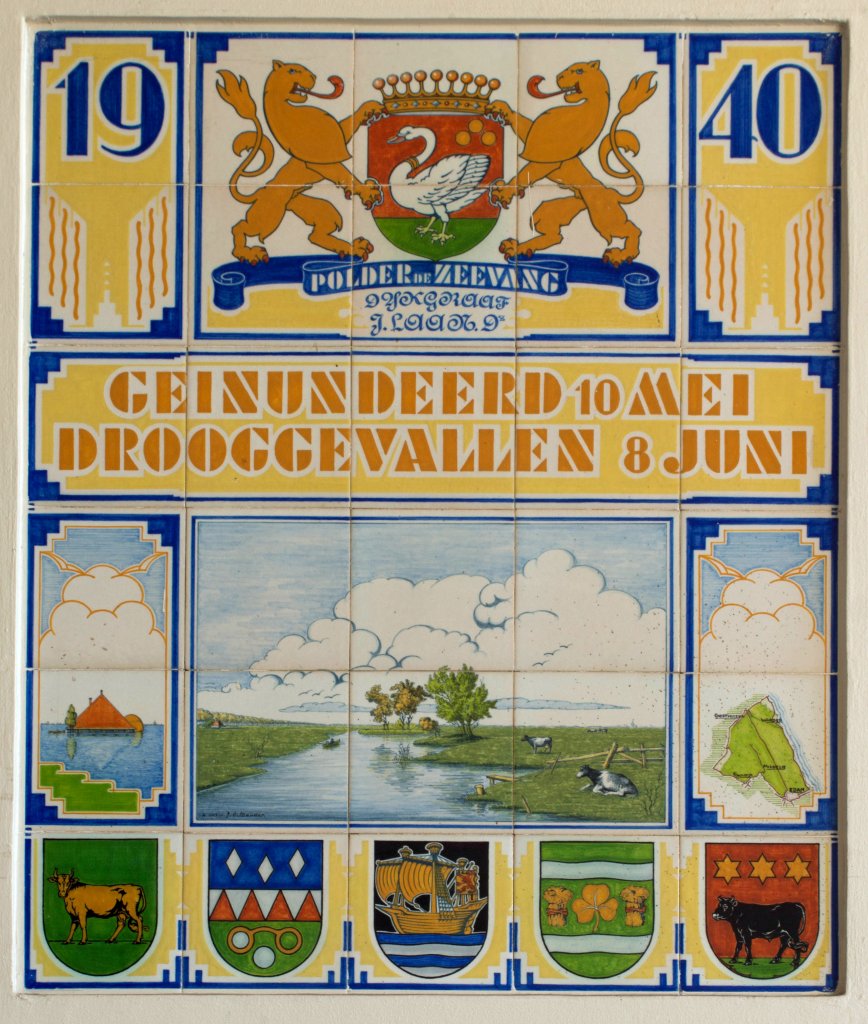
The second time was in March 1944, when the German occupiers in turn flooded the polder to prevent Allied air landings. Now the polder was under water for over a year. After the liberation, it took about a month for the pumping station to get the polder dry again.
Additional
Polder Zeevang (Natura 2000)
Hiking
Waterline trail stage 01 (Wandelnet)
Bikes
The Zeevang Route (Low Holland)
History and water heritage in Purmer-North (Low Holland)